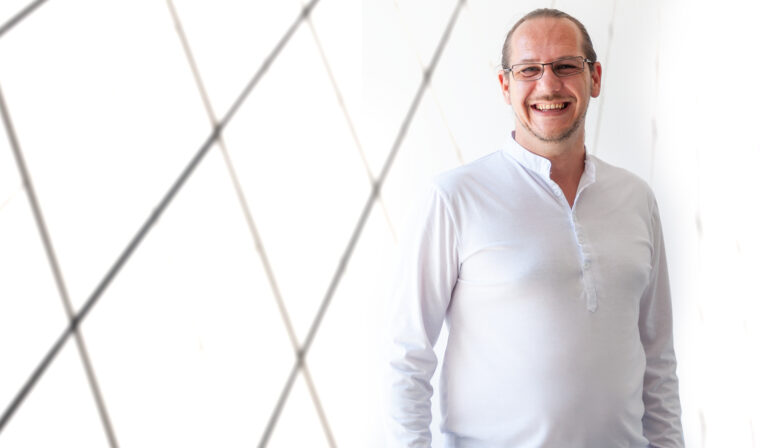Sniffer BeiT – unique BeiT technology
„A shoebox with antennas sticking out of it.” That’s the description given to the flagship technology that forms one of the key vertebrae in the backbone of our solution. Sniffer is a specific radio receiver, a data concentrator, or a data bus, installed in a building connected to BeiT’s Residential Account system. Its purpose is to collect energy consumption information from individual metering devices and send it to a cloud-based platform.
The buses are not such a major technological innovation, yet they are not yet widespread in residential buildings. This is probably also due to the current lack of systems, such as Housing Account, that are able to process and display metering outputs in an efficient and comprehensible way. Before we started to develop the first version of the sniffer, we purchased buses offered by various companies and started to test their technical parameters and how the declared functionalities work in practice, especially on structurally complex buildings. The beginnings literally resembled a high school physics practicum. We tested individual technologies in our offices in Prague and Bratislava, verifying the range and quality of radio transmission. However, the obtained parameters did not provide a penetration that would suit our needs sufficiently and we, therefore, decided to develop our own equipment.
The BeiT Sniffer boasts a number of clever and sometimes unique features.
An important part of the development work was the precise professional debugging of the radio part of the sniffer. To maximize sensitivity, technology was implemented in the sniffer, the use and adaptation of which, according to our measurements, ensured a data acquisition success rate at least 20% higher than the best competitive bus on the market. Compared to the average, we achieve up to twice the signal coverage. This primarily saves on the cost of the buses themselves, as the number of buses required is half that of the competition. The fact that the competition has not taken this route is not surprising. Their buses are one of their main commodities and therefore a source of revenue. Higher numbers and sales are thus rather desirable for them. BeiT is not producing its concentrator to maximize revenue, but to enable as many customers as possible to benefit from smart metering, thus opening up the possibility of tapping into the up to 30% savings on energy in homes that the Residential Account system enables.
We have also added the option of comprehensive remote configuration and control to make it easy to operate and minimize service costs. With the ability to set any of the sniffer parameters from our office, there is no need for a technician to check individual devices in person. Remote configuration allows not only changing the basic settings, but also continuous upgrading of the entire device firmware. This feature, due to the servicing of hundreds of devices all over the country, and in the future all over Europe, saves not only time but also costs that would otherwise be required for maintenance.
During development, we also focused on making the device capable of automatic self-reporting. Sniffer, therefore, sends a status report at regular intervals from which a range of development and operational problems can be remotely identified and subsequently resolved. The sniffer also has its own failsafe in the form of watchdog technology, which checks the sniffer periodically and automatically resets it if necessary. The watchdog thus again saves work that would otherwise be done by a specialist technician.
But the sniffer doesn’t just have technological gadgets. Equally important are the conceptual ones. The Sniffer is mains-powered. It is therefore not battery-powered like most products on the market. In fact, a battery-powered device typically lasts only five years, and since it needs to be put to sleep, it is not capable of online operation. Thus, battery buses normally send data once a week. This is insufficient for monitoring the power grid, and potential accidents and other abnormal situations cannot be effectively evaluated. It also does not allow savings to be easily realized as the user does not receive the necessary granularity of data in addition to the delayed information. The analysis that is needed to make savings in battery mode simply does not have enough information.
Another conceptual tweak is the versatility of the sniffer in terms of the protocols it accepts and the range of what devices and how many manufacturers it will allow collecting. By being competing devices offered generally by meter manufacturers, most of their buses focus on receiving only meters manufactured by them and only their data protocol. In practice, however, it is common to find a mixture of meters from different manufacturers and suppliers on a single block of flats. There are also devices from energy companies that can also be remotely metered with the sniffer. These are typically electricity meters or gas meters. The sniffer thus allows one box to operate all the energy networks in the house and this is its significant added value. In addition, when combined with the Residential Account system, the value to the manager, energy company, and residents is greatly enhanced. It moves the apartment building forward not five years, but decades.
Even though our product has been performing reliably in 50 different cities, we continue to innovate. The latest innovation from our workshop is a mobile app that has earned the working title “Virtual Technician.” With its help, even any untrained field technician can obtain information about the current status of installed sniffers just by physically approaching the device with a mobile phone. The data obtained is, immediately sent to our technical team even in case of a failure of standard communication.
The development of our own data collection device has not only taught us a lot but most importantly has shown that we can be better than most available technologies. It has given us more team courage to rely on our knowledge and go our own way.





